RHS'69
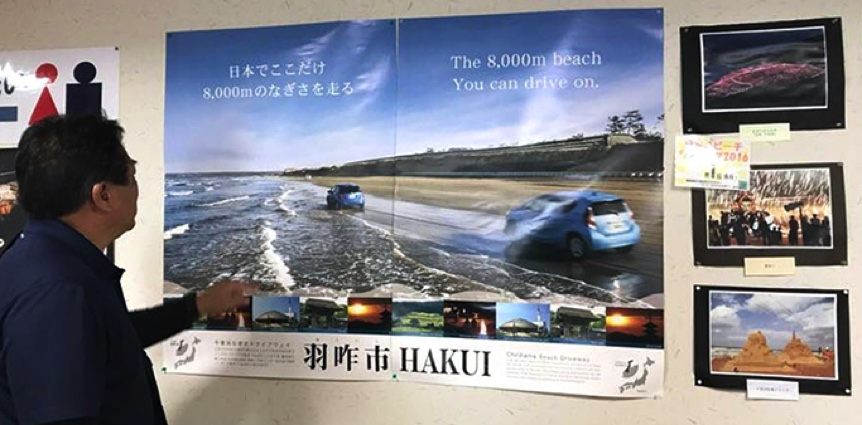
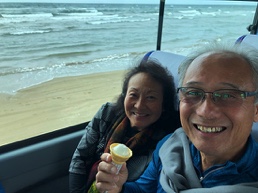
Tomodachi Tour IV - 2019


A full day of sightseeing with visits to the Wajima Morning Market and then the Chirihama Nagisa Driveway. The driveway is a very long beach and it's called that because people drive in it which seems to be a big deal. Then lunch and back to the hotel to get ready for another city in the morning.



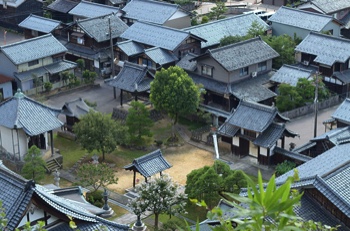

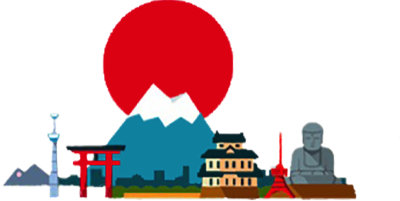

Time to leave Kyoto. The next stop is Kanazawa on the West Coast of Japan. A stop along the way is planned for the Echizen Washi Village
in northern Fukui where they will attempt to learn how to make washi paper.
Following lunch it's the Echizen Bamboo Doll Village and visiting the Kenrokuen Garden. Back to the hotel for dinner and bed.
Tomadachi IV - the fourth tour to Japan is two weeks in length. We have three reporters covering the trip: Lani Harrington, Vincent Yim (RHS'69) and Bobby Imoto (Kalani'69).
This is a "rolling blog" so each day's events are posted as they come in. Check back often for the latest.
Monday/Tuesday, March 4/5, 2019
Events added daily through Monday, March 11th

Kanazawa Weather for today
41 F (Japan 2:00 AM)
Predicted:
11:00 AM 53 F
7:00 PM 48 F
Precipitation 10%
Expected:
2:00 PM 40%
Humidity 85%
Wind 0 mph
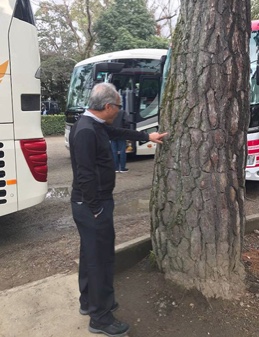
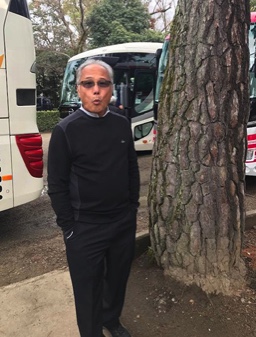
It appears this tree is responsible for a transgression of some sort. Vincent was seen giving the tree hell.
Several times he was wagging his finger in the tree's bark. It was traumatic for the tree - some leaves fell off.
Nobody knows what was going on.
Vincent but didn't have much to say. That in itself is very unusual.
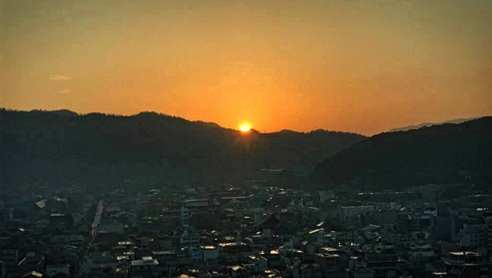
Looks like someone got up really early...
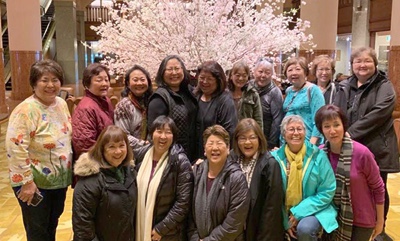
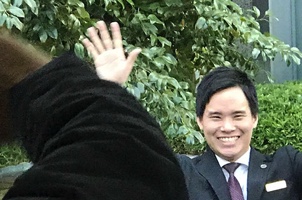
A final group picture in the lobby of the Kyoto hotel before hitting the road.
When a tour group boards their bus to leave, front desk workers almost always come out to wave goodbye. Sometimes they bring signs. A nice gesture.

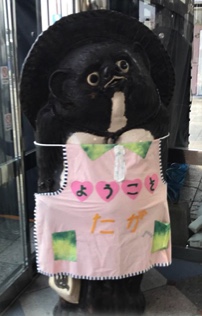
It is said everyone loves as mystery so here's one...
These were sent to us from a member of the tour.
Don't know who.
They appear to be figurines of some sort.
Don't know what.
Where these might have come from doesn't match up with anything this time of day on the official itinerary.
Don't know where.
There we are. Don't know anything but might know something later today. Or might not.
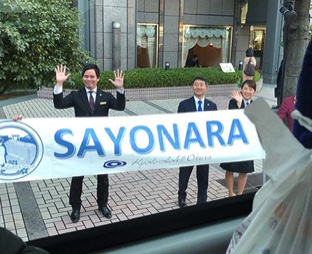
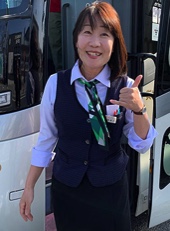

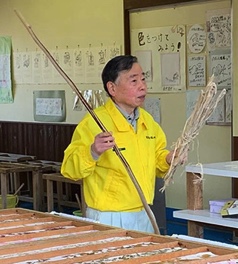
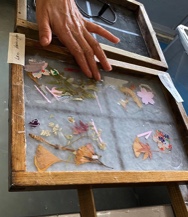
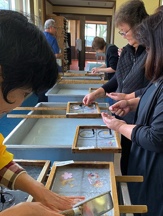
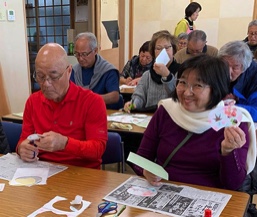
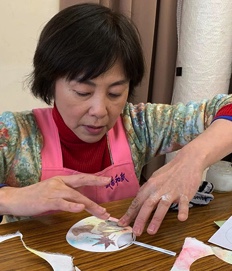

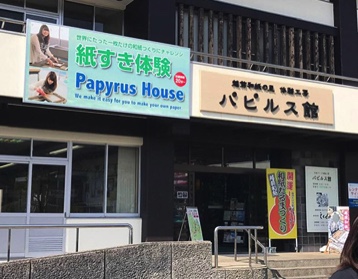
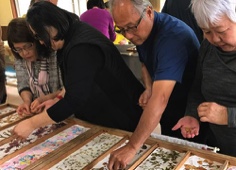
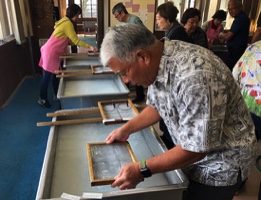
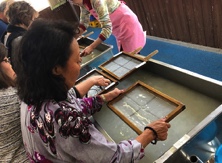
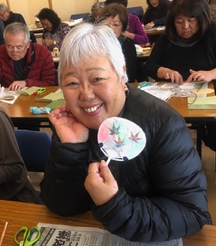

Washi is traditional Japanese paper. Washi comes from wa meaning "Japanese" and shi meaning "paper".
The term is used to describe paper that uses local fiber, processed by hand and made in the traditional manner.
Washi is made using fibers from the inner bark of the gampi tree, the mitsumata shrub, or the paper mulberry bush.
Washi is generally tougher than ordinary paper made from wood pulp, and is used in many traditional arts. Washi was also used to make various everyday goods like clothes, household goods, and toys as well as vestments and ritual objects for Shinto priests and statues of Buddha.
How to make washi paper would take more room than we have here. It's an art and that's why there are classes in how to do it.
The process can be slow and a skilled washi maker might produce 300 sheets a day.
The tour members had an opportunity to make washi from scratch, removing and soaking the bark, straining it and pressing the result to produce "sort of" washi paper. We say "sort of" because the mixture needs to sit overnight, which they were not able to do.
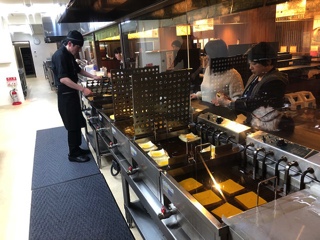
We have studied this picture for the longest time. It's important to get things right and not have "fake web".
We still aren't sure.
The guy is either getting ready to do bamboo stuff...or cooking cheeseburgers.
Please arrive at your own interpretation.
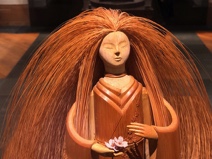

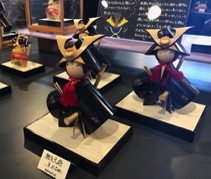

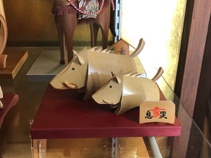
A visit to the Bamboo Village.
Called "takeningyo" in Japanese, the bamboo dolls made in the Echizen Bamboo Doll Village are each a work of art unto themselves.
One hallmark of the Echizen bamboo doll is its hair. Made of extremely thin wood shaved to less than 0.2 mm thick, it's very delicate and time-consuming to make.
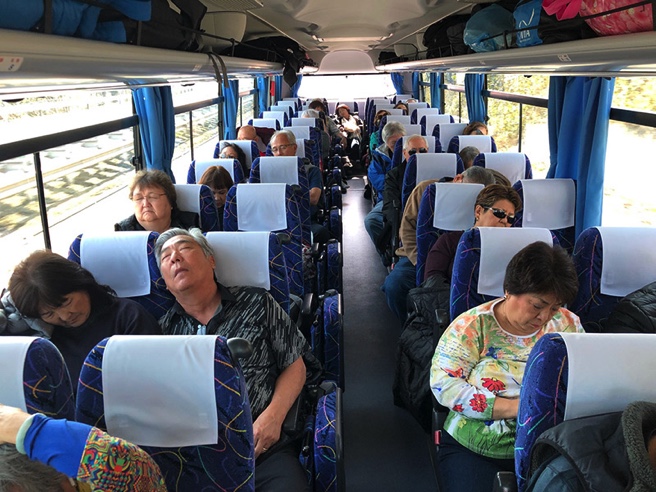
There should be a Pulitzer Prize for this.
Bobby Imoto (Kalani'69), a superb photographer who always seems to find the perfect angle or most interesting shot, hits another home run.
On the bus 10 minutes after lunch this afternoon. It speaks for itself.
This is by far our favorite picture of all so far.

Lunch.
The restaurant menu is mostly tofu stuff.
You may go yummy or eek depending on what you consider to be a gastronomical delight.

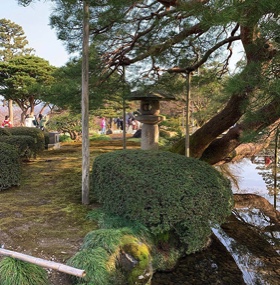
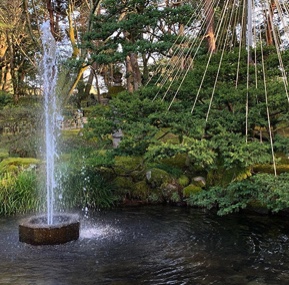
Someone woke everybody up so they could walk around the Kenrokuen Garden for a bit.


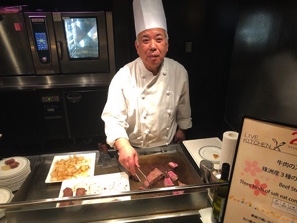
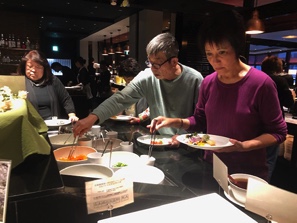
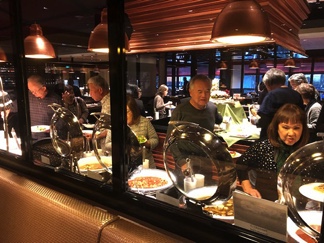

Dinner at the Hotel Nikko Kanazawa.
No Japanese food for a change: Steak, pasta, ribs, salads...

Waiting in the lobby for everyone to walk to a nearby shopping area at the Kanazawa train station.
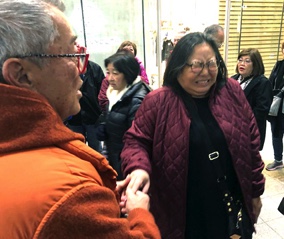
"Pull my finger"
Kanazawa Weather for today
Cloudy with occasional showers
45 F (Japan 12:30 AM)
Predicted:
11:00 AM 55 F
7:00 PM 49 F
Precipitation 40%
Expected:
10:00 PM 90%
Humidity 85%
Wind 2 mph
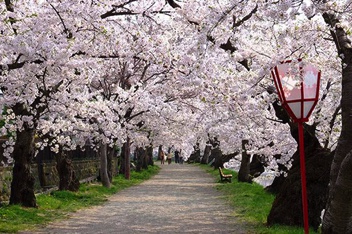
What's with the ropes?
They're called yukitsuri, and they protect tree branches from snapping under the weight of heavy snowfall.
Yukitsuri means "snow suspenders" in Japanese. The most commonly seen yukitsuris are made with ropes suspended from long bamboo poles.
Starting in early November, teams of gardeners work together to construct the tree-saving structures, which can be comprised of as many as 800 ropes for one tree. One gardener climbs the pole and throws the ropes down to several other workers who climb ladders to tie the ropes to the tree's branches.
While these ropes support the branches all winter, they also get dressed up. Kenrokuen Garden in Kanazawa, decorates the protective yukitsuri with rope lights and golden ornaments similar to a Christmas tree. The structures remain until early March as spring approaches.
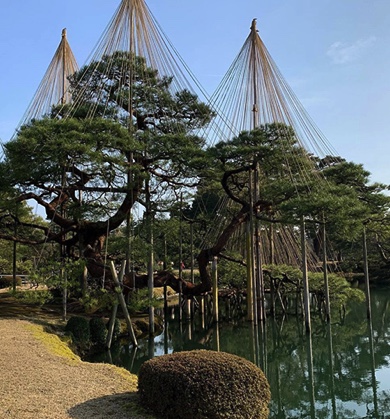

Today it's 112 Yen to a US dollar.
That makes the Whiskey & Soda $8.

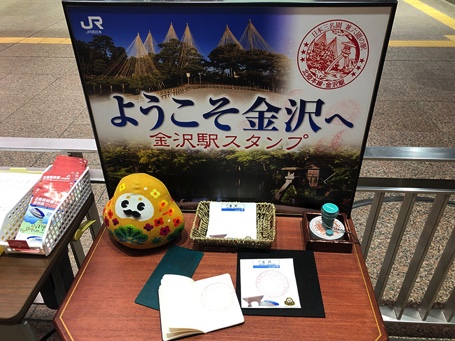
Bobby Imoto woke up very early this morning so he went for a walk. He says everything was very empty and cold. He wandered into a couple of convenience stores (7-Eleven and Family Mart) and a 24-hr restaurant. Hardly anyone inside at this time of day.
At the train station he found it empty at 0530 but by 0545, it was bustling. Must have gone in just before the rush hour.
Here's the Kanazaw station hand stamp he found. His guess is it's for visitors wanting to document their travels.
They have them at all he rest stops along the highways and at other visitor
attractions.
He then wandered
back to the hotel.
Time for breakfast.
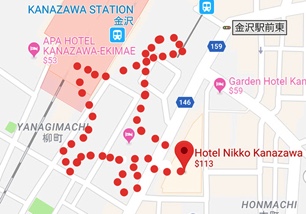
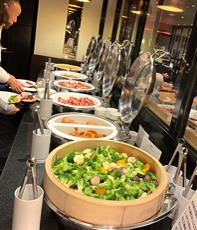
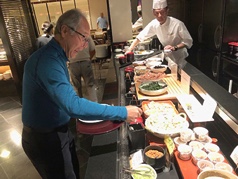
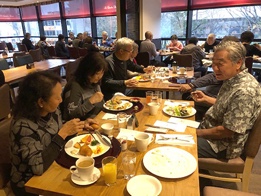

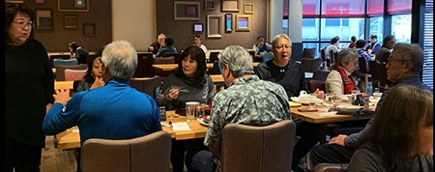
Breakfast
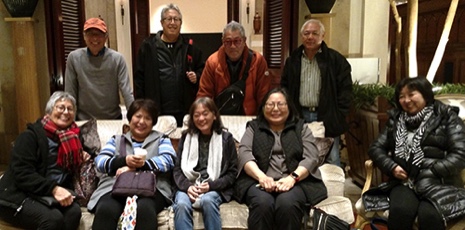
Waiting in the lobby for everyone so they can head off to the Wajima Morning Market.
Founded more then 1000 years ago, the Wajima Morning Market is 200 booths selling food, vegatables and local handcrafts.
Many products don't have a price tag so that means you better bring your haggling skills.

It's a 90-minute ride to the morning market. They got them playing bingo to keep them awake.
See yesterday's picture above.
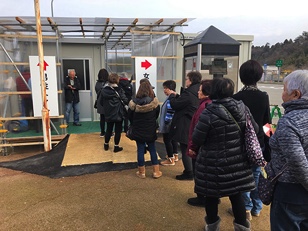
Pitt stop.
Apparently things are the same the world over. Long line for the ladies room.

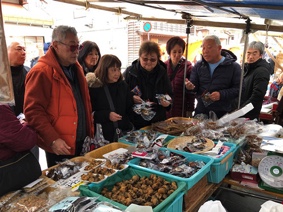

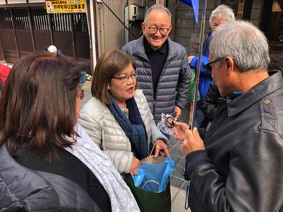

This is the morning market
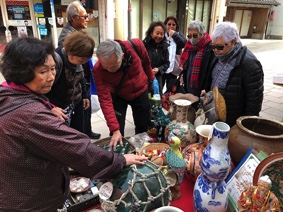
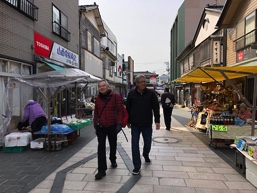


Shopping bags full they head to the beach. Really.
Views from the window.

Making a pit stop in Chirihama for a quick lunch.
Nothing like having the whole place to yourself.
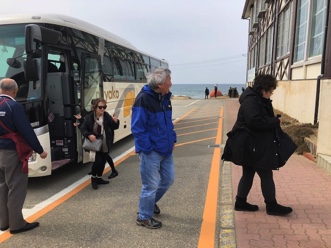
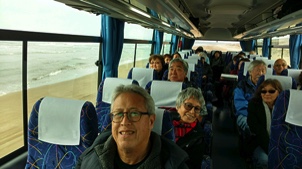

This is the Chirhama Nagisa Driveway. It's a beach. People can drive on it. .
You should not compare it to Kaiua or Lanikai.
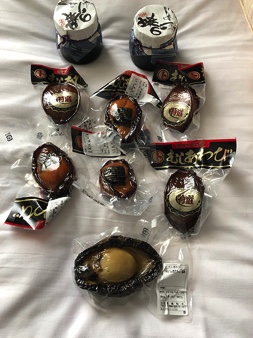
Dana Kobashigawa is RHS'69. Her husband is Roy and he's along on the tour with her.
Roy loves abalone, so he bought some to take home.
Feast your eyes on 50,000 yen worth of abalone. Bon appetit.


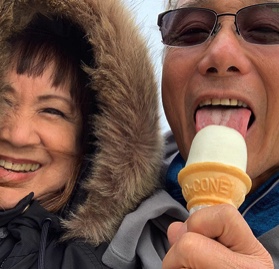
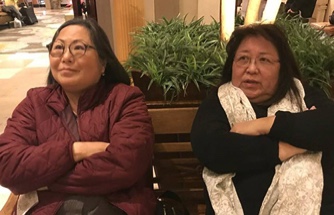
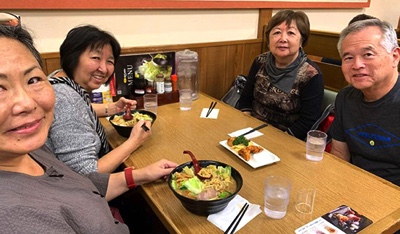
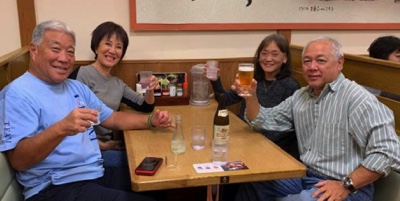
It's dinner. Everybody has ramen.
Of course. As usual.
#stuckinarut #samestuff
More museums, more shopping, more eating ramen...
Photos/video by:
Bobby Imoto Kalani'69
Lani Harrington RHS'69
Cheryl Osumi RHS'69
Vincent/Wendy Yim RHS'69
